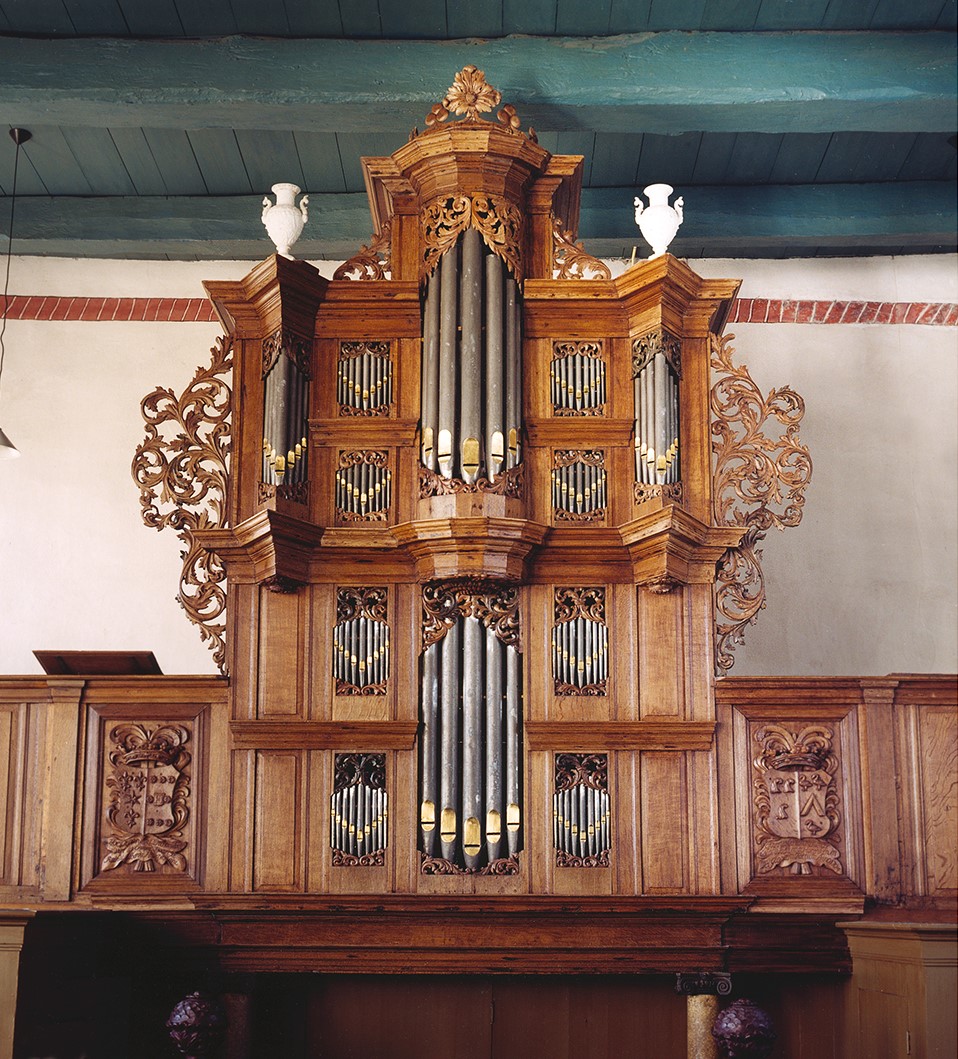Eenum, Kerk van Eenum
| Builder | A. Schnitger |
|---|---|
| Year | 1704 |
| Period/Style | Baroque |
| Stops | 10 |
| Keyboards | 1+P |
| Keyaction | tracker/mechanical |
| Tuning | 1/6 Comma Meantone |
The village of Eenum in Groningen province has roots dating back to ancient times, with its name possibly derived from a combination of "heem" or "hum" meaning home, and the name Eno. The brick church, initially constructed in the late twelfth or early thirteenth century, underwent renovations over the centuries, including the replacement of the original semi-circular choir with a rectangular one in 1845. The tower, completed in the early eighteenth century, stands as a testament to the village's architectural heritage.
Following the tower's construction, Arp Schnitger delivered a new balustrade organ to Eenum in 1704, commissioned by the village patron, Reindt Alberda. This organ, with ten registers and the keyboard positioned at the back, represented a significant addition to the church's musical repertoire. While Schnitger likely housed the wind system in the lower case of the instrument, the organ initially lacked a pull-down pedal.
Subsequent modifications and repairs by organ builders such as Heinrich Hermann Freytag and Petrus van Oeckelen altered the organ's configuration, reducing the number of registers and reworking old pipes to accommodate new ones. In 1987, the organ underwent a comprehensive restoration by the Reil brothers, which included the reconstruction of the original disposition, restoration of the manual's short octave, and repairs to the bellows. The organ case was restored to its original state, with layers of paint removed and intricate details refurbished, preserving the instrument's historical and aesthetic significance.
Following the tower's construction, Arp Schnitger delivered a new balustrade organ to Eenum in 1704, commissioned by the village patron, Reindt Alberda. This organ, with ten registers and the keyboard positioned at the back, represented a significant addition to the church's musical repertoire. While Schnitger likely housed the wind system in the lower case of the instrument, the organ initially lacked a pull-down pedal.
Subsequent modifications and repairs by organ builders such as Heinrich Hermann Freytag and Petrus van Oeckelen altered the organ's configuration, reducing the number of registers and reworking old pipes to accommodate new ones. In 1987, the organ underwent a comprehensive restoration by the Reil brothers, which included the reconstruction of the original disposition, restoration of the manual's short octave, and repairs to the bellows. The organ case was restored to its original state, with layers of paint removed and intricate details refurbished, preserving the instrument's historical and aesthetic significance.
| Manuaal | Pedaal (always attached) |
|---|---|
| Holpijp 8' | |
| Praestant 4' | |
| Holpijp 4' | |
| Quint 3' | |
| Woudfluit 2' | |
| Octaaf 2' | |
| Quint 1 1/3' | |
| Sesquialter II | |
| Scherp IV | |
| Trompet 8' |
https://orgeldatabas.gu.se/webgoart/goart/go_pub.php?p=36&u=1&f=334&l=de§sel=detail&id_nr=5834
 Pipe Organ Map
Pipe Organ Map